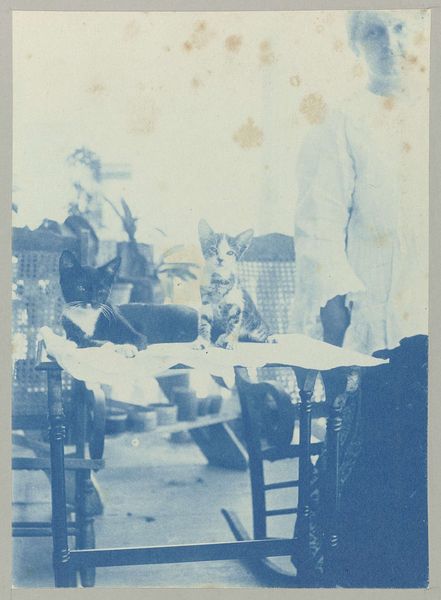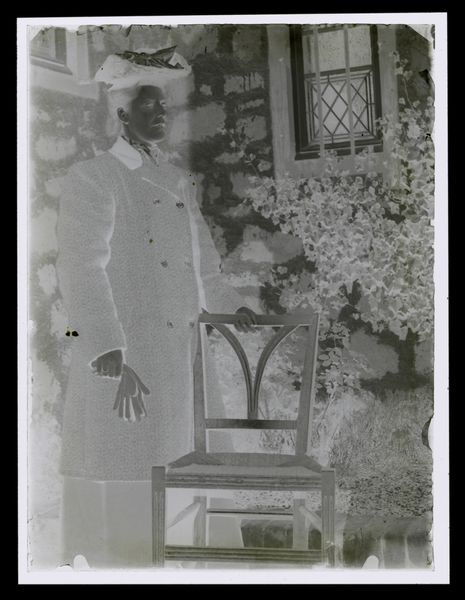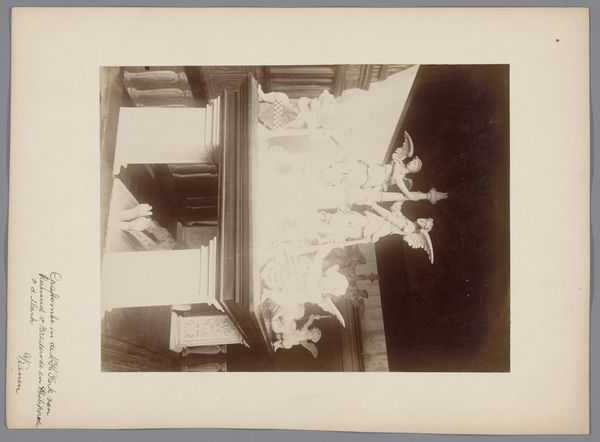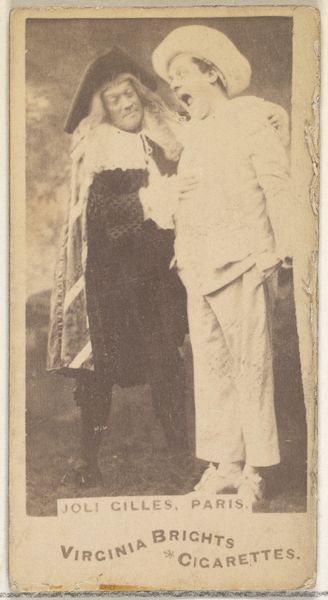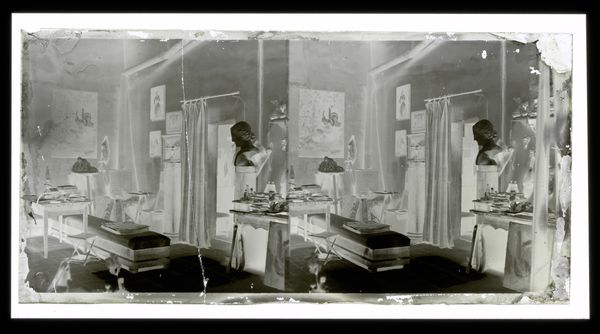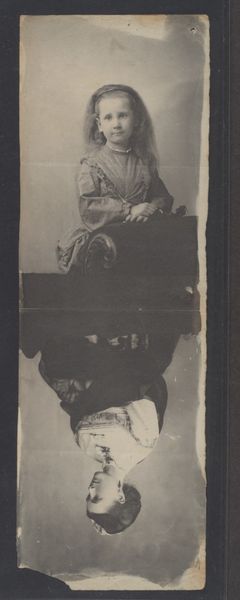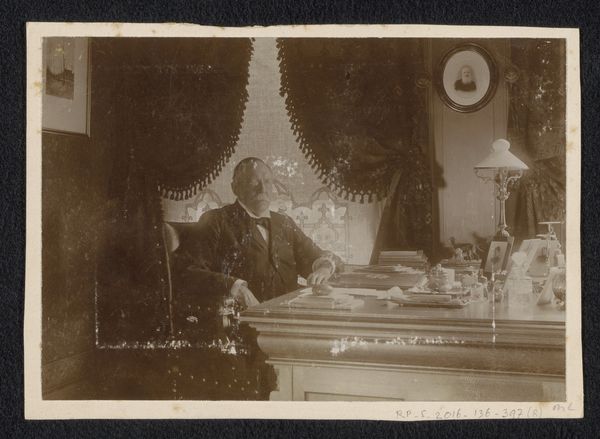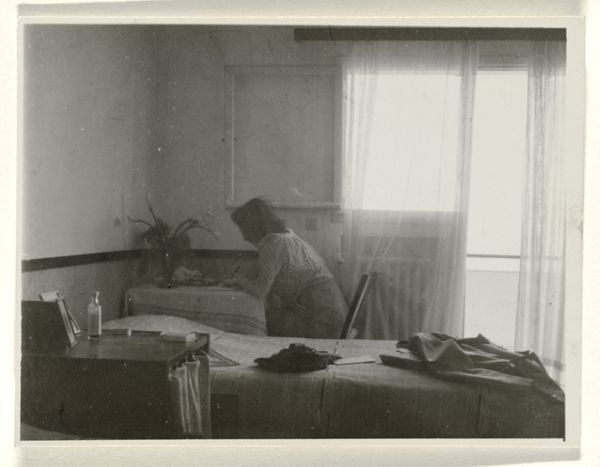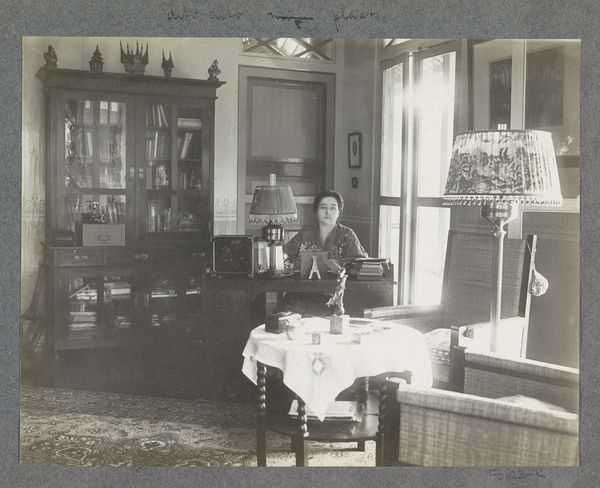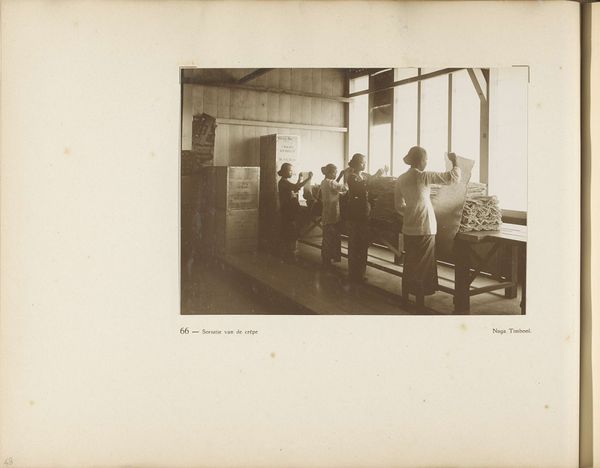
photography
#
portrait
#
pictorialism
#
photography
#
historical photography
#
genre-painting
Dimensions: height 170 mm, width 120 mm
Copyright: Rijks Museum: Open Domain
Curator: There’s an undeniable sweetness to Hendrik Doijer’s photography, “Onze Katten,” dating from between 1903 and 1910. My initial reaction is that it's remarkably intimate, like a captured family tableau. What do you make of it? Editor: The sepia tones give it such a melancholy feel, despite the sweet subject. There's something subtly haunting about the out-of-focus figure behind the table, as if witnessing a past moment from a removed distance. It reminds me how we treat images from this era, looking to them to speak of a time just out of our reach. Curator: That subdued background figure offers a wonderful comparison between background and foreground. The positioning also pulls a direct connection with the woman of the household. She has a slightly stiff expression but exudes kindness nonetheless. What symbols stand out for you? Editor: Cats themselves carry incredible symbolic weight – divinity, independence, femininity... placing them so centrally raises questions about domesticity and perhaps even challenges rigid societal roles of women within the home, subversively assigning importance to creatures and the seemingly mundane acts of caretaking. Is it the central moment for the human or for the animal? Curator: I think there’s something interesting about the way pictorialist photography like this draws so deliberately on conventions from genre painting, specifically Dutch Golden Age painting. The composition echoes familiar domestic scenes. Editor: Exactly! And that’s what I think makes it radical. By appropriating a visual language loaded with the weight of cultural tradition, it then elevates marginalized subjects. Curator: So what’s the emotional pull for you as we wrap up here? Editor: Its vulnerability, really. It highlights this fleeting glimpse into a shared life that challenges any static definitions we might impose upon gender and family in the domestic sphere. It seems almost dreamlike, that one might step into that time. Curator: For me, it is in fact the capturing of an unspoken warmth in a quiet place that truly pulls it all together. Its charm endures, even over a century later.
Comments
No comments
Be the first to comment and join the conversation on the ultimate creative platform.
